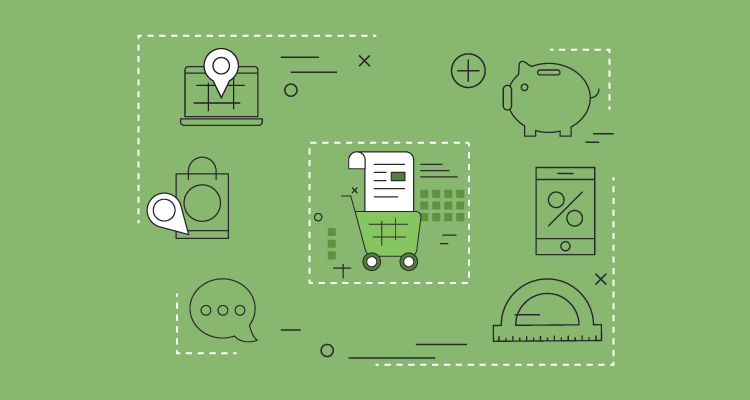Switching to a paper-based invoicing to electronic invoicing has become the norm. And, for good reason. E-Invoicing has simplified the payment process. We now have increased cash flow, and it’s saving business owners a ton of time and money.
Table of Contents
ToggleFollow these 8 tips that make your eInvoicing better.
1. Be selective.
If you do a quick search inquiry online for “electronic invoicing” you’ll no doubt receive thousands of electronic invoice templates and online invoicing platforms. Bury beware! Not all of these options are the same.
For example, PayPal has a straightforward invoicing platform. But, it lacks many customizable features that many leading invoicing platforms provide. The same is true with the plethora of generic invoice templates.
Before you start invoicing your clients, do your homework and find out what will work best for you. Choose either a platform or template that works best for your business invoicing.
If you’re stuck, here are some questions to ask when making this decision:
- What invoicing features do you need? If you want to do more than just invoice, then look for platforms that have features like time tracking, tax preparation, or inventory tracking.
- Is the platform or template a good fit for your organization? There are niche-related platforms/templates, like some designed just for nonprofits.
- How much do you want to pay? Some are free, some may set you back $10 to $50 per month.
- How many employees and clients does it support? Freshbooks Lite, for example, only allows you to bill 5 active clients at a time.
- Is it user-friendly? Some platforms are simple enough to figure out, while others may require some training.
- Is it compatible with multiple languages, currencies, and payment gateways? If you have global clients, this should be a must-have feature.
- How is data backed-up? If it’s on the cloud, this allows you to access it whenever and wherever you like.
- Does it adhere to PCI Data Security Standards (PCI-DSS)? Security needs to be a top priority so that you and your clients are protected from cyber attacks.
- Does it provide tech support or customer service? There will be troubleshooting and billing concerns. Make sure that there’s a way to address these issues.
- Is it scalable? Wave is an awesome accounting platform for small businesses. But, it only works if you have under 9 employees. If you plan on growing more than that, it may not be a good option.
- What are other users saying? Read reviews to help you answer any of the questions asked above.
2. Learn How Better eInvoicing Systems Work.
Did you find an electronic invoicing system? If so, that’s awesome. But, you’re just not done yet.
Like any new gadget that you purchase, give it a trial-run first so that you don’t make any mistakes when it’s time to bill your clients. Also, experiment with the customizable features, like the placement of the logo, colors, and font.
The easiest thing to do is create an invoice and send it to yourself, colleague, friend, or family member to make sure that everything is on the up-and-up.
3. Keep your clients in the loop.
If you start electronically invoicing your clients, either by emailing them a template or using an invoicing platform, notify them of the change.
You may not realize this, but it could impact their payment process. For instance, they may prefer a paper copy or don’t use a platform like PayPal.
To avoid any delays in payment, discuss this with them as early as possible.
4. Automate, automate, automate.
Now that you’ve made the switch to e-Invocing, you can start leveraging the power of automation.
This will not only speed-up the payment process, which your cash flow will appreciate, it will also save both you and your customer time and money.
Some invoicing platforms use automation to:
- Store customer payment information card so that you can charge them with just the click of a button.
- Set up recurring billing schedules.
- Automatic payment reminders and late-payment notifications. Flint, for instance, will “ping” customers until they make a payment.
- Enable online invoice processing so that clients can pay you whenever and however they prefer.
5. Humanizing your eInvoices.
Just because you’re using digital invoice doesn’t mean that you shouldn’t humanize your invoices. Take a couple of minutes to personalize each invoice, such as thanking the client for the payment, as well as their continued support over the last five years.
You can also add a personal touch to your invoices by mentioning additional products or services that your client could use or share with them a piece of content that could improve their business.
Both of these not only humanize your invoices, it speeds-up payments, and can be used as a marketing tactic for future work.
6. Offer payment plans.
There may be times when a client isn’t able to pay the full amount at the time of service, or when a payment is due. Instead of wasting your time by fighting with them, offer them a payment plan so that they can gradually pay down the balance. Thankfully, you can automate this payment plan by charging a customer’s credit card or bank account on a determined schedule.
In a way, it’s like a recurring payment. But, you may want to charge them interest for this option.
7. Have a reliable storage system in place.
If you use a cloud-based invoicing platform, your invoices are stored conveniently for you on the cloud. If you’re emailing your invoices, then make sure that you securely store them on the cloud yourself, like placing them in Dropbox.
The reason?
You may need to easily retrieve these invoices when preparing your taxes, chasing down late payments, or when dealing with an audit.
8. Don’t forget about invoicing best practices.
Just because you’re using a digital invoice doesn’t mean that you should forget all about invoicing techniques that get results.
This includes:
- Asking for payments upfront to prevent getting played (or donating your time).
- Customizing each of your client’s invoices, such as recipient’s name, contact information, and requested payment information like purchase order (P.O.) number, Employer Identification Number (EIN), and a breakdown of services.
- Keeping your payment terms as simple as possible.
- Offering incentives, like a discount for an early payment.
- Charge interest on late fees.
- Including your contact and brand information like your name, tax ID, address, and phone number
- Invoice number.
- Itemized list of products or services.
- Easy and convenient ways for your clients to pay.
- Saying ‘please’ and ‘thank you.’
Electronic invoicing has definitely made it easier for business owners of all sizes. e-Invoicing has helped improve cash flow, and the suggestions above will help you, too.
If I left any tips out, please share your thoughts in the comments.











